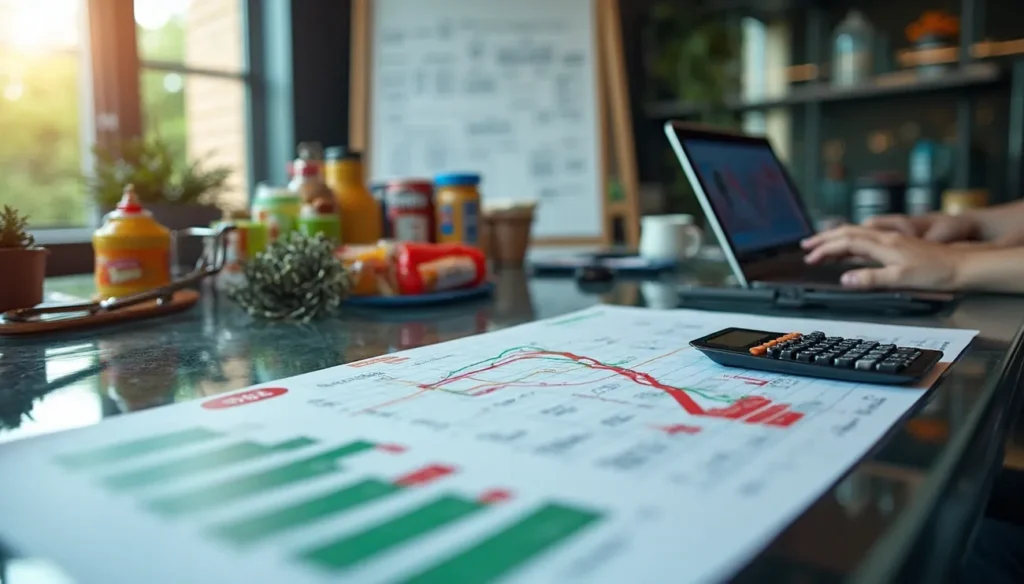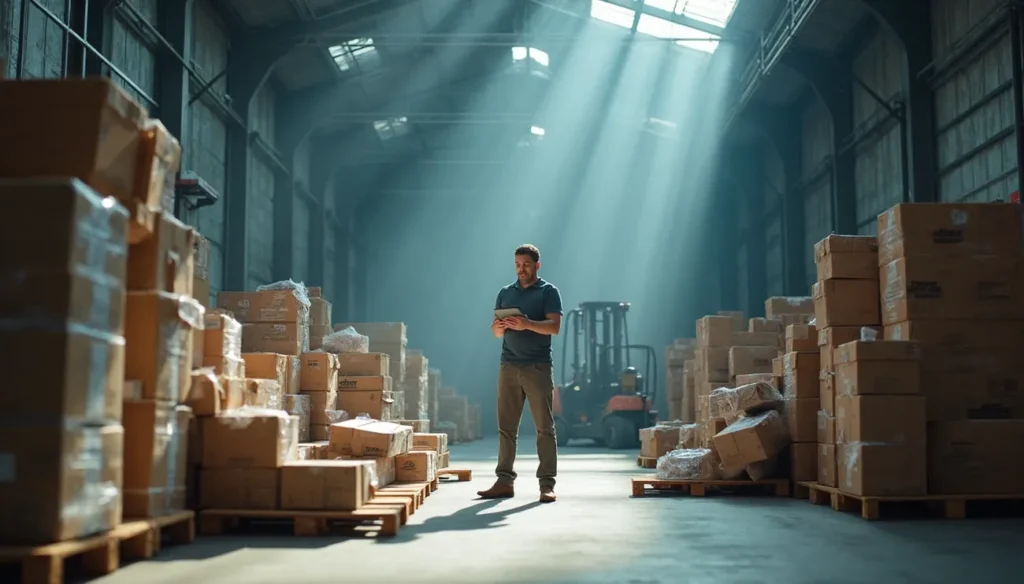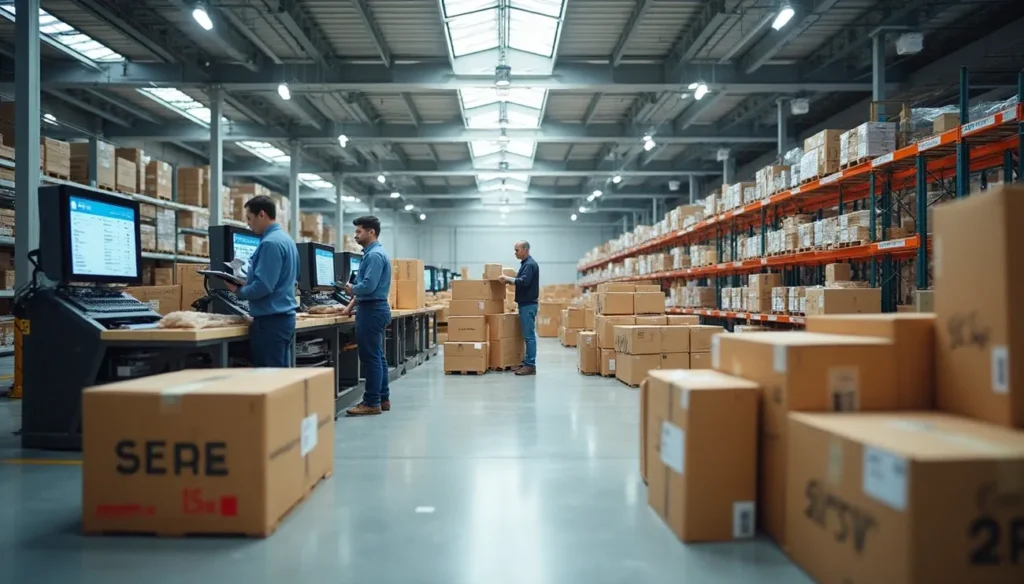Stop Margin Erosion Now: Essential COGS Control Strategies That Work
 Mid-market CPG brands face a serious threat to their survival from margin erosion. Many companies lose 5% of gross revenue through ineffective trade promotions without seeing any volume growth. Manufacturers throughout the industry struggle with rising costs, supply chain challenges and price-sensitive consumers.
Mid-market CPG brands face a serious threat to their survival from margin erosion. Many companies lose 5% of gross revenue through ineffective trade promotions without seeing any volume growth. Manufacturers throughout the industry struggle with rising costs, supply chain challenges and price-sensitive consumers.
Margin erosion happens when a company’s profit margins slowly decline due to pricing pressures, inefficient operations and poor revenue management. CPG companies’ gross margin erosion can devastate their business. Lost distribution, brand devaluation and retailer delisting are just some of the risks. The margin erosion calculation might look complicated, but companies must understand it because deductions represent their second-largest expense after cost of goods sold.
This piece explores proven strategies that stop profit margin erosion from threatening your business. Companies can reduce unprofitable discount events by 20% and regain 3-5% in net margins through immediate analytics and automated deductions management that can increase margins by 5-15%. The stakes have never been higher, but neither have the opportunities to improve.
Understanding Margin Erosion in CPG
The CPG industry faces a persistent challenge – profit margin erosion threatens long-term sustainability. Let’s understand what we’re dealing with.
What is margin erosion and why it matters
Margin erosion happens when profitability gradually declines even as sales remain stable. CPG manufacturers see this as a shrinking gap between their production costs and revenue, which directly affects their bottom line. This silent profit killer sneaks up quietly beneath surface-level metrics. It starts small with occasional discounts or rebates until healthy profit margins slip away unnoticed.
A recent survey reveals that 90% of CFOs worry their companies won’t meet revenue forecasts because of margin pressures. The effects go way beyond immediate profit loss. Lower margins limit a business’s ability to develop state-of-the-art solutions, expand market share, and serve customers better.
Common causes of gross margin erosion
The CPG sector’s eroding margins stem from several factors:
- Field teams use manual pricing and discounting practices without proper oversight, leading to inconsistent regional pricing
- Companies lack efficient processes and effective cost control measures that protect margins
- Rising procurement costs and production expenses outpace price adjustments
- Promotional inefficiencies emerge when repeated promotions fail to boost volume or build brand loyalty
- Scope creep happens as project requirements grow without matching budget increases
CPG manufacturers find e-commerce less profitable than traditional retail stores. More than one in four executives point to low profitability as their main e-commerce concern.
How to calculate margin erosion effectively
The math is simple: Margin = (Revenue – Cost of Goods Sold) / Revenue. Margin erosion shows up when this percentage drops over time.
Here’s how to calculate it:
- Get financial data from different periods (monthly or yearly)
- Use the margin formula for each period
- Look for declining trends in the margins
Early detection of erosion makes a significant difference. A price cut of just 1% can lead to an 11% drop in profit. Constant alertness helps maintain financial health.
Top 4 COGS Control Strategies to Stop Margin Erosion
CPG manufacturers can protect their profit margins by using proven strategies that tackle the main causes of profit margin erosion. Here are four practical approaches that work.
1. Optimize trade promotions with ROI tracking
Trade promotions take up 20% to 27% of CPG companies’ revenues. This makes it crucial to optimize these investments. Trade Promotion Optimization (TPO) uses analytical insights to get the best returns from promotional spending. The ROI formula—(Incremental Gross Margin – Promotional Spend) / Promotional Spend—shows which promotions create real value.
TPO helps you:
- Spot and remove promotions that waste resources
- Plan inventory better during promotional periods
- Test different scenarios with AI models before rolling them out
Yes, it is true that TPO stops you from wasting money on ineffective promotions and lets you put those funds into activities that perform better.
2. Use immediate data to prevent reactive pricing
Digital retailers who know how to adjust prices quickly have a clear advantage, especially during inflation. Companies that don’t have immediate pricing data risk customer loss, market position, and missed profits.
More importantly, pricing strategies based on immediate data can boost profits by 10-20% according to McKinsey. This lets you set prices based on stock levels, what competitors do, and market changes—instead of basic price-matching that misses good opportunities.
3. Improve profit pool visibility across the value chain
Many managers create strategy without really understanding where their industry’s profits come from. Over 50% of resources go to commercial activities that could accelerate profitable growth, but half of this money often ends up in the wrong place.
Poor visibility between departments (marketing, sales, IT) means companies look at investments one by one instead of taking an integrated view. Clear visibility into profit pools throughout your value chain leads to better resource use and smarter decisions.
4. Line up pricing with product value perception
The right prices should match what customers think your product is worth. Customers buy more readily when they feel the price is fair for what they get.
Value-based pricing sets prices based on perceived worth, not production costs. This method needs deep knowledge of what your customers value most in your product. Premium pricing for better quality products, bundle pricing, and smart discounting can all boost perceived value when used correctly.
Building a Data-Driven Margin Protection Framework
A solid data foundation is the life-blood of curbing margin erosion in the CPG industry. Companies need a framework that brings together different data sources, simulates outcomes, and uses advanced pricing models to protect profits.
Unite data from ERP, TPM, and retail portals
Bringing your data world together is the first step toward protecting margins. Companies can overcome common hurdles and realize substantial value through a well-laid-out approach to margin management. Start by evaluating your organization’s current data availability and analytics maturity. Next, set target goals that balance ambition with business realities.
The best way to unite data:
- Link your ERP, trade promotion management (TPM), and retail data by matching common fields
- Match repository objects between systems and coordinate them in your target system
- Check custom programs to ensure they work in the unified environment
A regular “margin council” helps leaders from sales, procurement, and finance review performance and make joint decisions.
Run scenario analysis for pricing and promotions
Scenario planning becomes a powerful tool once data comes together. Advanced predictive analytics combines historical data with current market trends to create and predict results for various promotional scenarios.
Byzzer’s Pricing Simulator shows this tool’s effectiveness – users can input specific price changes and estimate their effect on unit sales, volume, cost, and profit. Promotion simulators also give realistic predictions about potential sales increases from different promotional strategies.
Use elasticity models to guide pricing decisions
Price elasticity modeling is the third essential part of your evidence-based framework. Several methods work well:
Log-log elasticity models look at linear relationships between variables like price and quantity when shown as logarithms. Double Machine Learning offers more accurate estimates by factoring in related variables.
Products with high price elasticity see big demand changes from small price adjustments. Products with inelastic demand let you raise prices without losing much sales volume.
Tools and Resources to Support COGS Optimization
Reliable tools and technology are essential to curb profit margin erosion. Let’s head over to practical resources that enable your COGS control efforts.
Promotion planning worksheets
Specialized planning templates help teams track results and arrange their efforts across promotional tactics. Research shows that 59% of all promotions deliver no incremental value. Companies waste about €27 billion (USD 32.50 billion) on “bad promotions” each year across Europe’s top markets. Trade promotion analytics programs can optimize efficiency by 1%, which leads to 5–7% operating profit improvement. These worksheets have:
- Campaign timing and mechanics
- Budget allocation fields
- ROI tracking metrics
- Post-promotion analysis sections
Price realization dashboards
Price realization dashboards show how well you achieve set product prices in the market. These visual tools highlight top offenders, spot outliers, and explore pricing details. They help teams to:
- Communicate value consistently
- Track price realization trends over time
- Identify patterns in customer value perception
- Evolve pricing to achieve strategic goals
Elasticity modeling tools
Modeling price elasticity guides retailers in choosing pricing strategies for key items and categories. Understanding elasticity is vital—calculating millions of elasticity values needs an AI pricing platform to work. Methods range from log-log elasticity models to Double Machine Learning techniques that account for confounding variables.
Profit pool analysis templates
Profit pool visibility reveals opportunities throughout the value chain. These analysis templates unite data from multiple sources and show that 50% to 70% of available assortment delivers only 2% of total category sales. A well-managed assortment optimization program can boost sales and profits by up to 20% for both supplier and retail customer.
Conclusion
Margin erosion can kill CPG brands, but companies with the right strategies can curb this silent profit killer. This piece explores how data-driven approaches protect your bottom line effectively.
Smart ROI tracking of trade promotions cuts wasteful spending and redirects resources to high-performing activities. On top of that, real-time pricing data gives you the power to respond to market conditions instead of making reactive decisions that hurt profitability.
There’s another reason why profit pool visibility matters across your value chain. Companies make smarter resource allocation decisions when they know where profits come from. Your products should command prices that reflect their worth in the customer’s mind.
A detailed data framework strengthens these efforts without doubt. Data combined from multiple systems and scenario analysis capabilities help make informed decisions before new price changes or promotions. Elasticity models boost this approach by offering scientific guidance for pricing decisions.
Promotion planning worksheets, price realization dashboards, and profit pool analysis templates support these strategies. These tools are available whatever your current analytics maturity level. Managing margins needs constant attention, but the rewards make it worthwhile – recapturing 3-5% in net margins creates substantial value for most CPG manufacturers.
Margin erosion takes time to develop, and so does margin protection. The experience toward better profits needs alertness, strategic planning, and data-backed decisions consistently. Companies that become skilled at these approaches will gain an edge while building resilience against market pressures. Your path to long-term profitability begins when you apply these proven strategies today.





